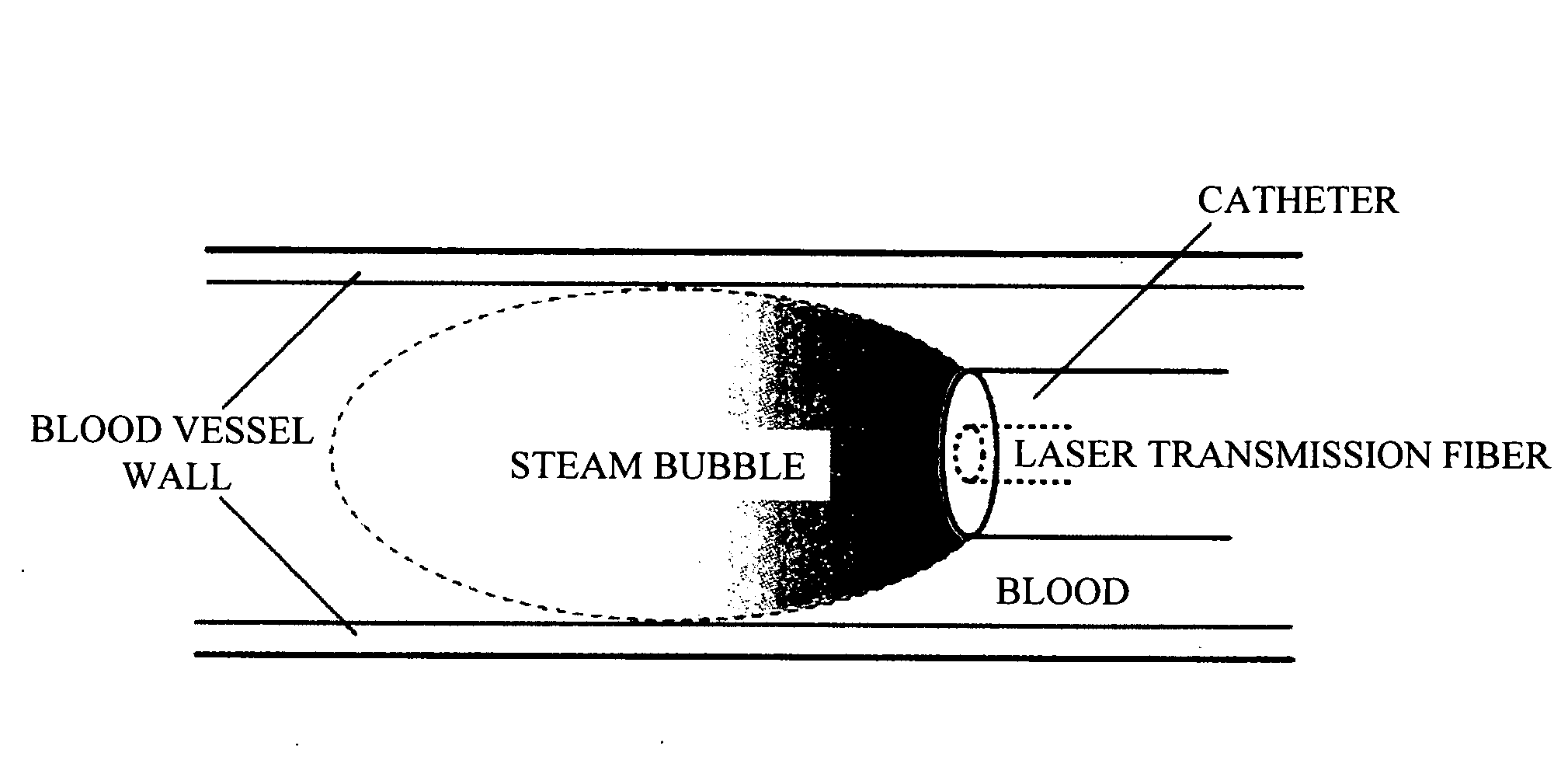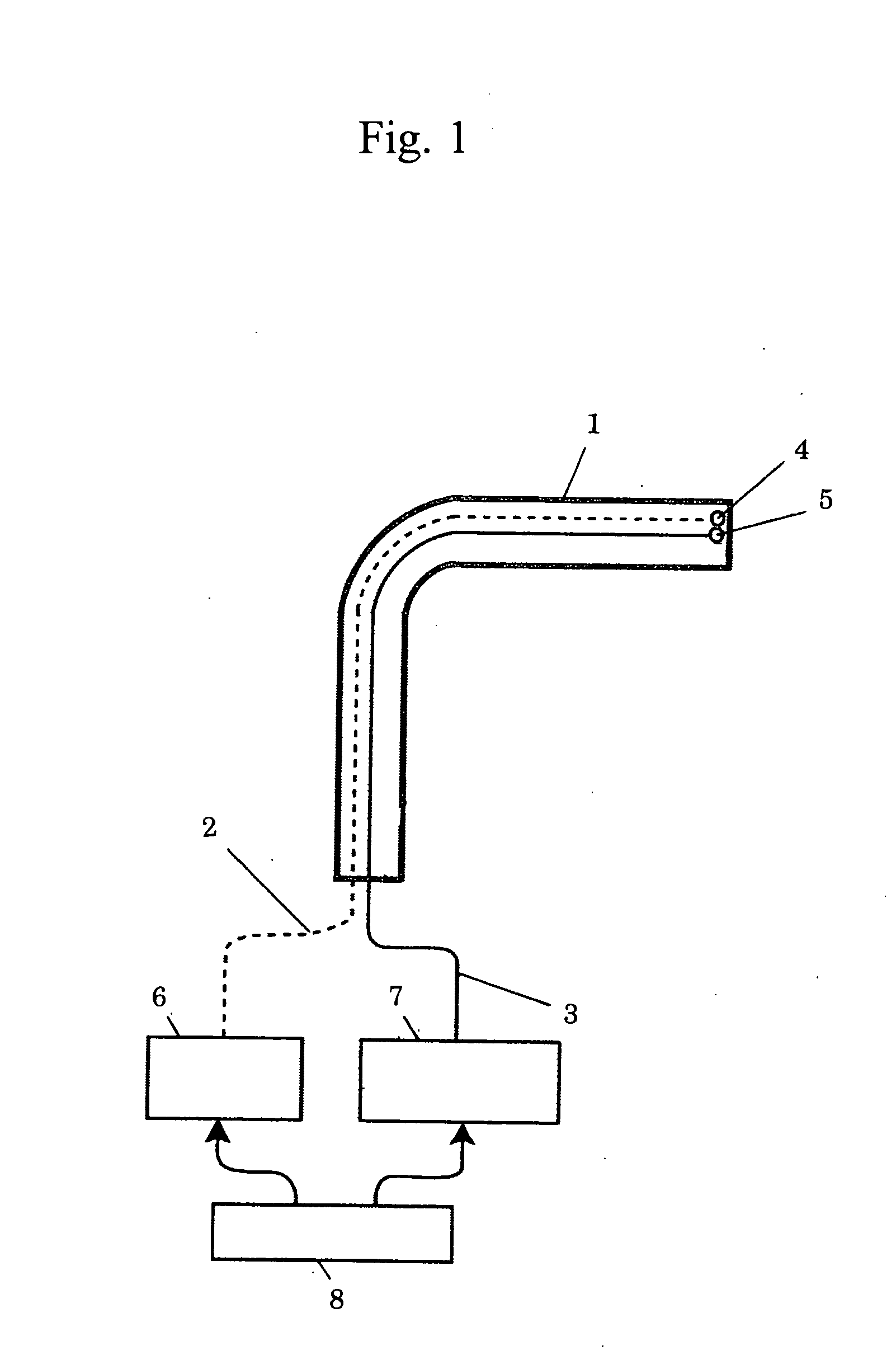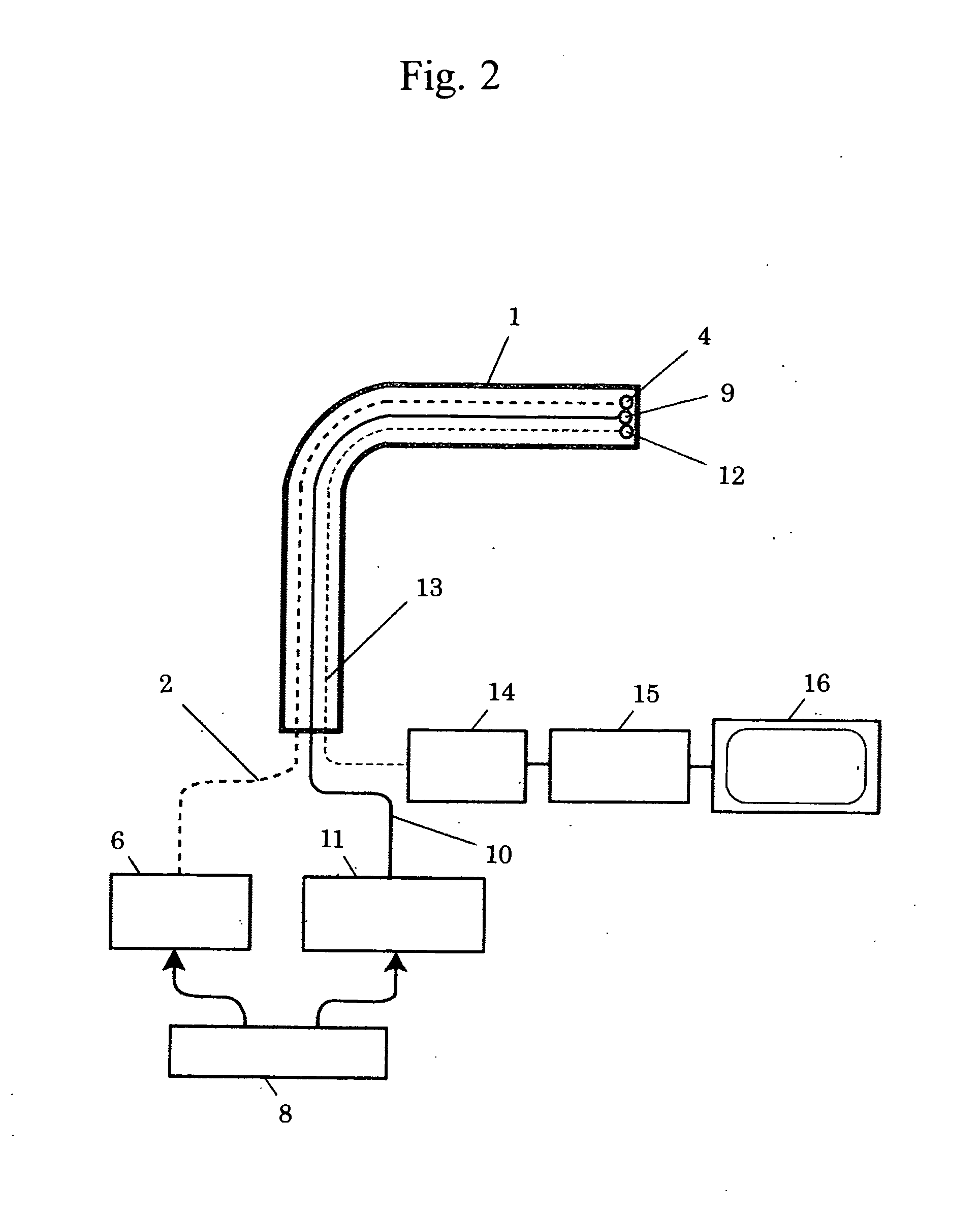Intravascular Diagnostic or Therapeutic Apparatus Using High-Intensity Pulsed Light
a high-intensity, pulsed light technology, applied in the field of intravascular diagnostic or therapeutic equipment, can solve the problems of inability to secure a sufficient time difficulty in allowing light to reach the region of the blood vessel targeted for diagnostics or therapy, and limited hemostasis time for avoiding ischemia
- Summary
- Abstract
- Description
- Claims
- Application Information
AI Technical Summary
Benefits of technology
Problems solved by technology
Method used
Image
Examples
example 1
[0121]The endoscope used in this example is shown in FIG. 5. As shown in FIG. 5, a small-diameter endoscope 22 was installed in a stainless steel sheath 23 having a length of approximately 3 cm and an inner diameter of 0.8 cm.
[0122]An image guide 20 and a lightguide 21 were placed in the small-diameter endoscope 22. A laser transmission fiber 19 is disposed along those guides and these were placed in a catheter sheath 18. In this case, the small-diameter endoscope 22, that is, the far ends of the image guide 20 and lightguide 21 were made to slightly protrude from the laser transmission fiber 19. Identical quartz optical fibers were used as the optical fibers for image pickup in the laser transmission optical fiber 19 and image guide 20. A plastic lightguide was used for the lightguide 21. The diameter of the laser transmission fiber 19 was approximately 0.6 mm and the diameter of the small-diameter endoscope 22 integrating the lightguide 21 and image guide 20 was approximately 0.7 ...
example 2
[0125]A silicon tube was filled with milk and the inner wall of the tube was observed using the endoscope of the present invention. The endoscope used was the same as that of Example 1. A silicon tube having an inner diameter of 3 mm was cut open, a piece of paper colored with water-resistant red ink was pasted inside and the silicon tube was closed again. Next, a far end part of a catheter sheath 18 in which a laser transmission optical fiber 19 of the endoscope, lightguide 21 and image guide 20 were disposed was inserted into the silicon tube and the tube was put in the milk so that the tube was filled with the milk. Next, pulsed laser was irradiated to generate water-vapor bubbles and images thereof were taken. The laser intensity at this time was 200 mJ / pulse or 450 mJ / pulse at the end of the laser irradiation fiber. The pulse width was approximately 200 μs. The images of the intravascular lumen delayed by a delay generator and taken by a CCD camera were displayed on a monitor a...
example 3
[0129]An aorta lumen of Japanese white rabbit was observed using the endoscope of the present invention. The structure of the endoscope used is in conformance with the endoscope shown in FIG. 5 used in Example 1, but a flash lamp excitation Ho:YAG laser (manufactured by Cyber Laser, model FLHY-1) was used for the laser generator. Furthermore, a fiber having a core diameter of 0.6 mm, outside diameter of 1.45 mm was used as the laser irradiation fiber and this fiber was used tied with an endoscope having an outside diameter of 1.3 mm (manufactured by au Medical Laboratory).
[0130]A 10 Fr. sheath was held to Japanese white rabbit aorta and the above described fiber tied with the endoscope was inserted therein.
[0131]The laser irradiation condition was 10 Hz, 400 mJ / pulse. As the control, images of the intravascular lumen were taken without laser irradiation.
[0132]FIG. 14 shows a photo of the intravascular lumen taken without laser irradiation and FIG. 15 shows a photo of the intravascul...
PUM
 Login to View More
Login to View More Abstract
Description
Claims
Application Information
 Login to View More
Login to View More - R&D
- Intellectual Property
- Life Sciences
- Materials
- Tech Scout
- Unparalleled Data Quality
- Higher Quality Content
- 60% Fewer Hallucinations
Browse by: Latest US Patents, China's latest patents, Technical Efficacy Thesaurus, Application Domain, Technology Topic, Popular Technical Reports.
© 2025 PatSnap. All rights reserved.Legal|Privacy policy|Modern Slavery Act Transparency Statement|Sitemap|About US| Contact US: help@patsnap.com



